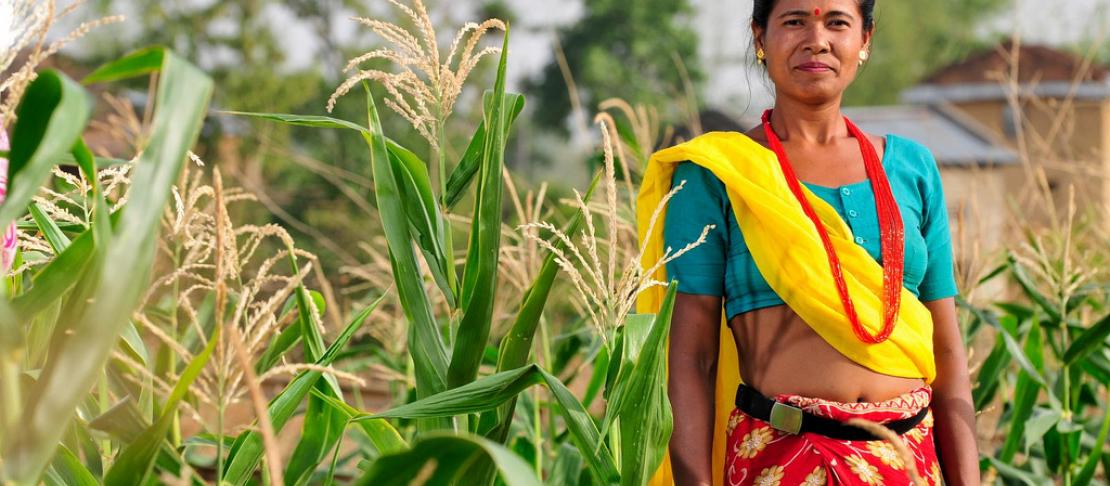Can countries embed climate adaptation in their development plans?

How well are countries integrating climate adaptation into economic development programs? A new policy brief examines the challenges in developing National Adaptation Plans in twelve countries across East Africa, West Africa and South Asia.
The fact that climate change is here and will impact every aspect of our lives in the coming years and decades is no longer debatable. What is often hotly debated at forums dedicated to finding solutions, such as the meetings around the United Nations Framework Convention on Climate Change (UNFCCC), is how to design and implement appropriate adaptation and mitigation measures to create resilient systems that can withstand climate change.
Past research has shown that while climate change will affect every country and region in one way or the other, the impact will be disproportionate – with developing countries and least developed countries (LDCs), who are less able to cope with the impact, more at the receiving end. These countries may need technical and other forms of assistance to cope with the impending change.
This is why the UNFCCC introduced the National Adaptation Plans (NAPs) in 2010 to encourage countries to start integrating climate change adaptation into their development plans, using a coordinated cross-sectoral approach. NAPs are designed to tackle urgent medium to long-term food security, livelihoods and developmental challenges and reduce countries’ vulnerability to climate change.
Read more: National Adaptation Plans in agriculture: a work in progress
A new policy brief by the CGIAR Research Program on Climate Change, Agriculture and Food Security (CCAFS) examines the challenges in developing adaptation plans in twelve developing and least-developed CCAFS priority countries in East Africa, West Africa and South Asia; and finds that many of these countries are still struggling with designing cross-sectoral plans that integrate climate adaptation into development programs.
Some level of successes in cross-sectoral approach to planning was reported in the Ghanaian “Akporong Approach”, a logical cross-sectoral framework which uses multi-criteria analysis to identify problems and policy solutions. Other such successful initiatives include Nepal’s “Thematic Working Groups” organized around different line ministries; India’s increased interest in integrated assessments (as noted in its 2nd National Communication to the UNFCCC); and Tanzania’s guidelines, issues by the Vice President’s office, which defines how climate change adaptation can be integrated into national sectoral policies, plans and programmes .
Also, in countries like Ethiopia and Kenya, the cross-sectoral approach to adaptation policy design is gaining momentum among policymakers with the movement of the coordination of climate change activities away from the National Meteorological Agency to the Office of the Prime Minister in Ethiopia. In Kenya, the draft National Climate Change Framework Policy Bill, being currently debated in Parliament, hopes to establish a National Climate Change Council (NCCC) which will be anchored in the Presidency and chaired by the Deputy President.
Read more: Combined solutions to strengthen adaptation
Despite these successes, challenges remain and much work lies ahead. Adaptation plans in many of the assessed countries suffer from inadequate finance and poor funding. This is often a result of impact assessments that are purely along sectoral lines with little attention to opportunities for coordination across sectors. Some assessments also miss opportunities to link adaptation strategies to current development programs to benefit from integrated/sustained funding and safeguard development investments.
Other challenges, apart from the sectoral approach to risk assessment, include lack of institutional framework and governance structures to effectively coordinate and implement adaptation plans; a notable absence of the private sector in planning and implementation, and adaptation plans that did not assess the economic implications of climate risks and therefore compromise the integrity of the design and measures.
Read more about NAPs
Can countries bankroll climate adaptation without undermining development?
The serious business of NAP-ing
Conclusions of the policy brief
Overall, the new policy brief concludes with some recommendations to enhance the planning successful NAPs:
Countries should consider how local levels can be brought into planning and prioritization, where much climate adaptation implementation occurs.
Governance institutions need to be adaptive to adjust to response measures as new information on climate impact develops.
Strengthening capacity to identify and rank climate risks and prioritize response activities.
Identify sources of NAP implementation finance during planning phase.
Increased capacity for integrated approaches to adaptation planning is needed.
Widen stakeholder engagement in design and implementation, especially the private sector and marginalized groups.
The CCAFS policy brief will contribute to several activities related to national adaptation plans at the upcoming meeting of the UNFCCC Subsidiary Bodies (SBSTA):
Side event: Planning climate adaptation in agriculture: Advances in research, policy and finance on June 7
Side event: Advancing Climate-Smart Agriculture in Africa on June 8
Follow all our updates from SBSTA on our blog and on twitter via @cgiarclimate and @cgiarclimate_EA
DOWNLOAD THE NEW POLICY BRIEF:
Climate adaptation and agriculture: Solutions to successful national adaptation plans
by G. Kissinger, C. Sova, B. Allassane, IA. Maïga, DT. Benefor, DK. Nutsukpo, AZ. Ky-Zerbo, C. Roth-Liehoun, SM. King’uyu, V. Orindi, E. Rojas, JL. Rivera, JP. Mishra, R. Singh, PK. Joshi, J. Kinyangi, P. Aggarwal, R. Zougmore, LS. Sebastian, D. Martinez, H. Neufeldt, J. Twyman, O. Bonilla-Findji and A. Jarvis
Oluwabunmi Ajilore is a visiting researcher at the CIAT and science communicator for CCAFS Theme 1.



